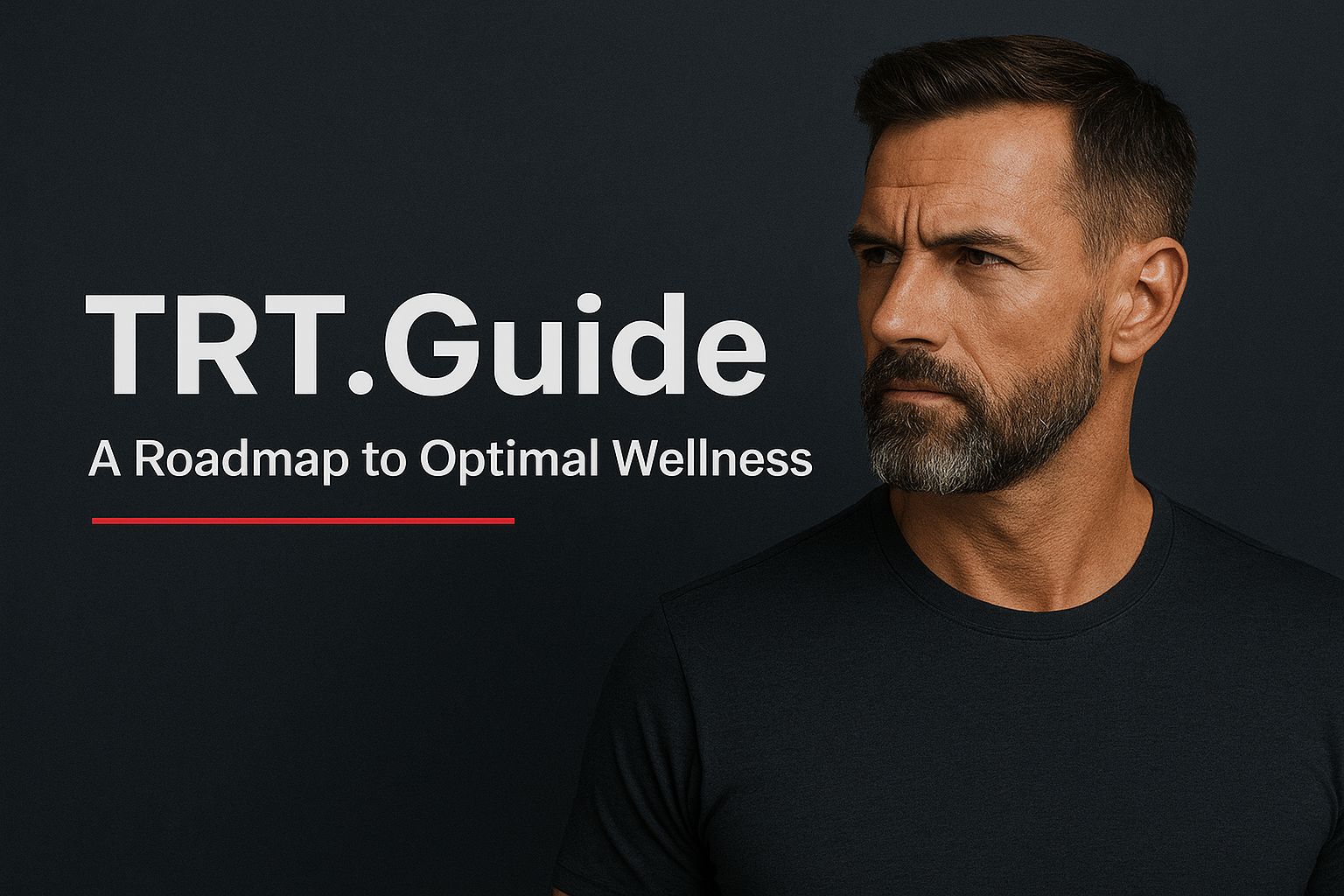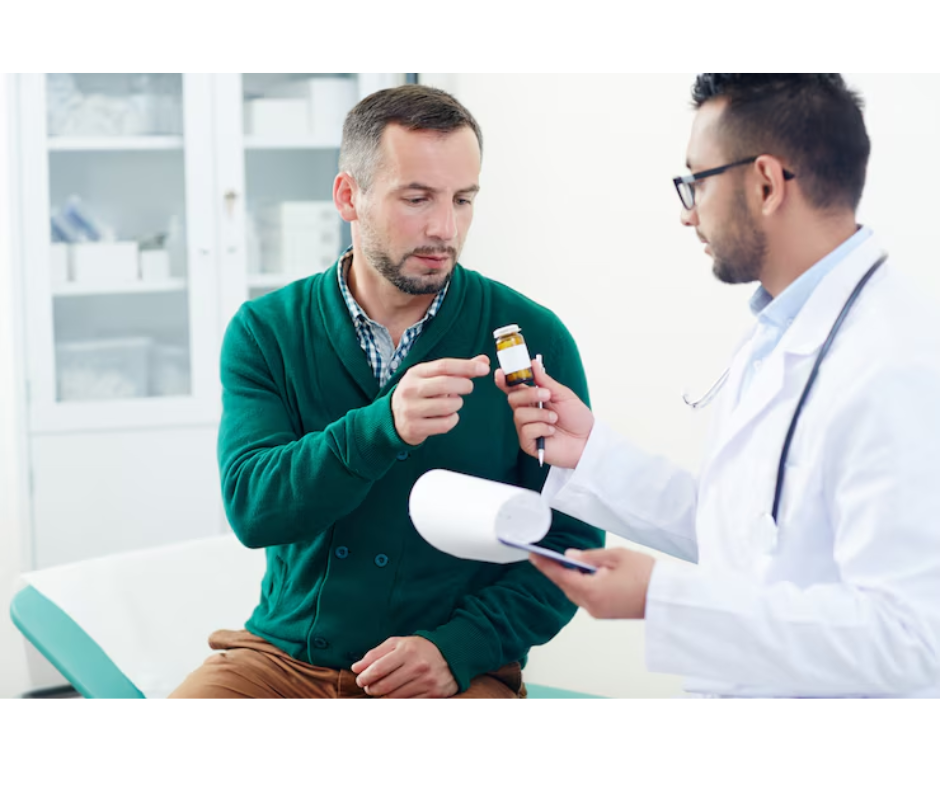If you’ve been hearing whispers about testosterone replacement therapy (TRT) in your social circles, you’re not alone. Many are turning to TRT as a solution for low testosterone levels, seeking to reclaim their vitality and well-being. But what’s the real story behind the grapevine chatter?
In this article, you’ll uncover the essential facts about TRT, from its benefits and potential risks to the latest trends in treatment. Whether you’re considering it for yourself or just curious about the buzz, understanding the ins and outs of testosterone therapy can empower you to make informed decisions. Get ready to dive into the world of TRT and discover what it could mean for you.
Overview of Testosterone Replacement Therapy Grapevine
Testosterone replacement therapy (TRT) addresses low testosterone levels, also known as hypogonadism. It involves administering testosterone through various methods, including injections, patches, gels, and pellets.
Indications for TRT
TRT primarily benefits men experiencing symptoms of low testosterone. Common symptoms include fatigue, reduced muscle mass, decreased libido, and mood changes. Medical professionals often assess testosterone levels through blood tests to confirm hypogonadism before proceeding with treatment.
Benefits of TRT
TRT offers several potential advantages:
- Increased Energy Levels: Many individuals report enhanced energy and decreased fatigue.
- Enhanced Mood: Some users notice improved mood stability and a reduction in depressive symptoms.
- Improved Sexual Function: TRT often leads to heightened libido and better erectile function.
- Increased Muscle Mass: Testosterone can promote lean muscle development and strength.
Risks and Considerations
TRT carries certain risks and considerations:
- Cardiovascular Issues: Studies suggest a potential link between TRT and increased risk of cardiovascular events. Regular monitoring is essential.
- Prostate Health: TRT may impact prostate health. It’s crucial to discuss any pre-existing conditions with a healthcare provider.
- Fluid Retention: Some individuals experience fluid retention, which needs monitoring.
Current Trends in TRT
Current trends in TRT emphasize personalized treatment plans. Healthcare providers recommend tailored dosages based on individual symptoms and testosterone levels. Additionally, there’s growing interest in the psychological aspects of low testosterone, prompting further research into the mental health benefits of TRT.
Monitoring and Follow-Up
Ongoing monitoring of testosterone levels is vital for those undergoing TRT. Regular follow-up appointments help adjust dosages and manage potential side effects effectively. Blood tests for hormone levels, prostate-specific antigen (PSA), and hematocrit will guide proper treatment adjustments.
Understanding the essentials of testosterone replacement therapy facilitates informed decisions about treatment options. Whether dealing with symptoms of low testosterone or exploring TRT, staying informed about its benefits and risks is crucial for optimal health management.
Benefits of Testosterone Replacement Therapy Grapevine
Testosterone replacement therapy (TRT) offers several advantages for individuals experiencing low testosterone levels. These benefits enhance overall well-being and improve daily functioning.
Improved Energy Levels
TRT plays a significant role in boosting energy levels among men suffering from low testosterone. Increased testosterone production stimulates the body’s metabolic functions, leading to greater stamina and vitality. Men often report heightened energy throughout the day, reducing feelings of fatigue and lethargy.
Physical activity also becomes more manageable with improved energy, which can lead to increased participation in exercise routines. Engaging in regular exercise further enhances energy levels, creating a positive feedback loop. Additionally, adequate testosterone levels contribute to better sleep quality, as they help regulate sleep patterns. Better sleep allows for greater daytime alertness, making daily tasks feel less daunting.
A study published in the Journal of Clinical Endocrinology and Metabolism indicated that men undergoing TRT experienced a marked improvement in energy levels compared to those not receiving treatment. If you’re dealing with fatigue linked to low testosterone, TRT may provide the revitalization needed to reclaim your active lifestyle.
Enhanced Mood and Mental Clarity
TRT can significantly enhance mood and mental clarity, particularly for men experiencing mood swings or depressive symptoms due to low testosterone levels. Adequate testosterone levels influence neurotransmitters like serotonin and dopamine, which play crucial roles in mood regulation.
Men undergoing TRT often report increased feelings of well-being, enhanced self-confidence, and reduced anxiety. This positive mental shift can create a more productive mindset, aiding in both personal and professional realms.
Furthermore, TRT improves cognitive functions, including concentration and memory. Research from The Aging Male journal shows that men receiving testosterone therapy often show enhanced cognitive abilities compared to those not treated. Increased focus and clarity help navigate daily challenges more effectively.
If you’re facing mood fluctuations or cognitive issues, exploring TRT could lead to noticeable improvements in your overall mental health and clarity.
Risks and Side Effects
Testosterone replacement therapy (TRT) carries potential risks and side effects that individuals should carefully consider. Understanding these aspects helps you make informed choices about your health.
Common Adverse Effects
TRT may lead to several common adverse effects, impacting various bodily functions.
- Acne: Many individuals experience increased oil production and breakouts on the skin.
- Hair Growth: You might notice increased body hair or facial hair growth, also known as hirsutism.
- Mood Changes: Altered mood levels, including irritability or aggression, often occur during treatment.
- Fluid Retention: Some people experience swelling due to fluid buildup in the body.
- Sleep Apnea: TRT can exacerbate or cause obstructive sleep apnea, affecting sleep quality and overall health.
- Breast Enlargement: Gynecomastia, or enlargement of breast tissue in men, may develop as a side effect.
Discussing these potential adverse effects with your healthcare provider ensures proper management and monitoring throughout your therapy.
Long-Term Health Concerns
Long-term use of TRT raises specific health concerns that warrant attention.
- Cardiovascular Risks: Studies suggest that TRT may increase the risk of strokes, heart attacks, and other cardiovascular issues.
- Prostate Health: Prostate enlargement and elevated PSA levels can occur, requiring regular screening to monitor prostate health.
- Liver Issues: Though rare, TRT can affect liver function; monitoring liver enzymes is essential during treatment.
- Possible Infertility: TRT may suppress natural testosterone production, leading to decreased sperm production and potential infertility.
- Blood Clotting Risks: Increased red blood cell production can elevate the risk of thrombosis and pulmonary embolism.
Regular follow-ups and open communication with your healthcare provider are crucial for managing these long-term concerns effectively.
How Testosterone Replacement Therapy Works
Testosterone replacement therapy (TRT) addresses low testosterone levels using various administration methods and ongoing monitoring to ensure effectiveness and safety.
Administration Methods
TRT utilizes several administration methods to deliver testosterone effectively. Common methods include:
- Injectable Testosterone: Intramuscular or subcutaneous injections provide rapid testosterone absorption, typically administered every 1 to 2 weeks.
- Transdermal Patches: Patches applied to the skin release testosterone gradually, requiring daily application.
- Topical Gels: Gels applied to the skin allow testosterone absorption and are usually applied daily to clean, dry areas of the body.
- Pellets: Subcutaneous pellets are implanted under the skin, releasing testosterone over 3 to 6 months, providing a long-term solution.
Each method presents unique benefits and potential downsides. For example, injections offer immediate effects, while patches and gels provide convenience and ease of use. Consulting with your healthcare provider helps in choosing the most suitable method based on your health status and lifestyle.
Monitoring and Dosage Adjustments
Monitoring plays a crucial role in TRT effectiveness. Regular follow-ups ensure testosterone levels are within the optimal range. You’ll undergo routine blood tests to measure testosterone levels, typically every 3 to 6 months during the initial treatment phase.
Dosage adjustments may occur based on test results and your specific response to therapy. If testosterone levels remain inadequate, your healthcare provider may increase the dose or change the administration method. Conversely, if adverse effects arise, a reduction or cessation might be necessary.
Ongoing communication with your healthcare provider ensures a personalized approach, aiming for maximum benefits while minimizing potential risks.
Success Stories and Testimonials
Numerous individuals share their positive experiences with testosterone replacement therapy (TRT). Testimonials highlight transformations in energy, mood, and overall health, demonstrating TRT’s potential benefits.
Increased Energy Levels
Many users report a significant boost in energy after starting TRT. For instance, John, age 45, experienced chronic fatigue for years. After his TRT regimen began, he noted enhanced stamina, allowing him to exercise regularly and engage in family activities more actively.
Improved Mood
Improved mood is a common theme among TRT recipients. Sarah, a 38-year-old, struggled with irritability and depression. Following her treatment, she described a newfound sense of happiness and stability, positively impacting her relationships and work performance.
Enhanced Sexual Function
Improvements in sexual health frequently appear in success stories. Michael, 52, faced decreased libido and erectile dysfunction. After a few months on TRT, he reported heightened sexual desire and significant improvements in his intimate relationships.
Increased Muscle Mass
Increased muscle mass often follows TRT as well. Kevin, a 60-year-old who started a weightlifting program after therapy, gained noticeable muscle definition. He attributed his success to both the therapy and his renewed commitment to fitness.
Better Sleep Quality
Better sleep patterns are another common benefit of TRT. Jessica, 40, had insomnia prior to starting her therapy. Since beginning TRT, her sleep quality improved, leading to better functioning and productivity throughout the day.
Enhanced Cognitive Function
Many men report clearer thinking and sharper focus as a result of TRT. David, age 50, noticed better concentration levels at work, which enabled him to excel in his career and take on new responsibilities confidently.
Community Support
Online forums and local support groups provide additional encouragement. Many TRT users exchange tips, advice, and emotional support, fostering a sense of community that enhances their TRT journeys.
Each success story contributes to a growing body of evidence regarding TRT’s effectiveness. These firsthand accounts empower individuals considering therapy to make informed choices about their health and wellness. Regular consultations with healthcare providers help ensure safe and effective management of therapy, further supporting positive outcomes.
Conclusion
Exploring testosterone replacement therapy can be a transformative journey for many. As you consider your options it’s vital to weigh both the benefits and potential risks. Staying informed and communicating openly with your healthcare provider can lead to a tailored approach that suits your unique needs.
Remember that regular monitoring and adjustments are key to maximizing the effectiveness of TRT. Engaging with community support can also enhance your experience, providing encouragement and shared insights. By taking these steps you’ll empower yourself to make the best decisions for your health and vitality.
Frequently Asked Questions
What is testosterone replacement therapy (TRT)?
Testosterone replacement therapy (TRT) is a medical treatment designed to raise testosterone levels in individuals suffering from low testosterone, or hypogonadism. It involves administering testosterone through various methods, including injections, patches, gels, and pellets, to alleviate symptoms such as fatigue, reduced muscle mass, and low libido.
Who can benefit from TRT?
TRT primarily benefits men who experience symptoms related to low testosterone, such as fatigue, decreased libido, mood changes, and reduced muscle mass. However, a proper diagnosis through blood tests is essential to confirm low testosterone levels before considering therapy.
What are the benefits of TRT?
TRT can lead to numerous benefits, including increased energy levels, enhanced mood, improved sexual function, and greater muscle mass. Many individuals report feeling more vital, experiencing reduced fatigue, and enjoying a better quality of sleep after undergoing therapy.
What are the risks associated with TRT?
While TRT has its benefits, it may pose potential risks, including cardiovascular issues, impacts on prostate health, fluid retention, and mood changes. It is essential to discuss any pre-existing health conditions with a healthcare provider before starting therapy to mitigate these risks.
How is TRT administered?
TRT can be administered via various methods including injectable testosterone, transdermal patches, topical gels, and subcutaneous pellets. Each method has its own benefits and drawbacks, making it important for individuals to consult with their healthcare provider to select the most suitable option.
How often should testosterone levels be monitored during TRT?
Routine blood tests to monitor testosterone levels are typically conducted every 3 to 6 months during the initial treatment phase. Regular follow-up appointments ensure proper dosage adjustments and effective management of any potential side effects.
Can TRT cause side effects?
Yes, TRT can lead to side effects, including acne, increased hair growth, fluid retention, mood swings, sleep apnea, and breast enlargement. Discussing these potential side effects with a healthcare provider is crucial for managing and mitigating them effectively.
Is TRT safe for long-term use?
Long-term use of TRT carries specific health concerns, like cardiovascular risks, prostate health issues, and potential infertility. Regular follow-ups with a healthcare provider are essential to monitor health status and manage these long-term risks effectively.
What role do success stories play in understanding TRT?
Success stories from TRT users highlight the positive transformations many experience through therapy, including improvements in energy levels, mood, and cognitive function. These testimonials can empower individuals to make informed decisions about their health and wellness regarding TRT.
Why is community support important for TRT users?
Community support, through online forums and local groups, provides encouragement and shared experiences among TRT users. Connecting with others facing similar challenges can help individuals stay motivated and informed during their TRT journey.






